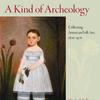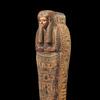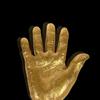First Major Exhibition of Sculpture By Wallace Chan To Debut in Venice and Online
- VENICE, Italy
- /
- April 26, 2021
From May 20 – October 31 (Previews: May 19), Chinese multidisciplinary artist Wallace Chan’s first major sculpture exhibition will be on view at the Fondaco Marcello in Venice and can be experienced online via a virtual tour, artist interviews and other behind-the-scenes content. Online audiences will also get a sneak preview of a new art film about Chan’s extraordinary life and work by the award-winning director Martina Margaux Cozzi, due to be released in 2021.
‘TITANS: A dialogue between materials, space and time’, curated by James Putnam, will feature a series of large-scale titanium and iron sculptures and an immersive installation composed of titanium and mirrored stainless steel, giving an unprecedented survey of Chan’s work as a sculptor. Together, this new body of work conveys Chan’s contemplation on the relationship between materials, space and time through titanium: a futuristic, space-age material that has long been the subject of his experimental impulses.
Wallace Chan is one of the world’s most celebrated jewellery artists, but his accomplishments in sculpture – an art form that he has been practicing for almost half a century – are less well known. As a carving apprentice at aged 16, opaque stones such as malachite, jade and coral were his materials, and auspicious Chinese motifs were his inspiration. Chan developed his skills and learnt the art of Western sculpture by visiting Christian cemeteries and admiring the marble sculptures of saints and angels. After six months of devoted monkhood in the early 2000s and, having given up all his possessions, Chan found himself in the complete absence of artistic resources. However, his passion for sculpture compelled him to create works usingaffordable materials like concrete, copper and stainless steel.
Whatever his medium, Chan is always driven by a fascination with materials and a desire to push them beyond their limits. Titanium, named after the immortal ‘Titans’ in Greek mythology, is the strongest, most durable and lightweight metal. Mainly used in the aerospace industry, titanium has been overlooked by artists due to its cost and complex production process. After many years of careful research and experimentation, Chan developed a method of working with titanium initially for his jewellery and more recently for his large-scale sculptures. Today, he is employing a range of sculpture techniques: from modelling and casting to carving, welding and assembling, to create titanium sculptures that are very rarely seen on this scale.
The free-standing sculpture series, A Dialogue between Materials and Time, explores the juxtaposition between the lightness and durability of titanium with iron’s weightiness and susceptibility to corrosion. With the russet, oxidised iron making a striking contrast to the titanium’s polished silver surface, the materials evoke the passage of time, since iron will eventually rust away while the titanium could last for eternity. The central motif of these majestic, semi-figurative sculptures, which stand up to 3 metres tall, is a colossal head whose facial features are serene yet strong, with a peaceful aura reminiscent of a deity statue. The head is distorted and elongated, almost anamorphic and androgynous, simultaneously ancient
and somewhat extraterrestrial.
Chan says: “I juxtaposed titanium and iron beams and gave them faces and shapes so that they would stand as something monumental and poetic. The iron beams will rust in a few hundred years. The titanium will outlive the iron beams. Both materials will outlive me. My time, and the lifespan of iron and titanium are measured against one another. Time is at once terribly short yet interminably long. It encompasses everything.”
Chan’s site-specific installation, A Dialogue between Materials and Space, explores the illusion of space inside non-space. The piece refers directly to Chan’s celebrated ‘Wallace Cut’, a unique technique of carving gemstones that he developed in the 1980s. Inspired by the photography technique of multiple exposure, Chan can create the illusion of 3D engraving inside gemstones. Five faces appear, but only the central one is carved; the faces on either side are merely reflections. Similarly, in this new immersive installation, Chan uses light and reflection to produce a unique spatial effect that invites the viewer to interact with and become part of the work. The artist’s use of mirrored stainless steel is a nod to Venice’s history
as the most important centre for mirror production from the 16th century and an homage to a city that has been a constant source of inspiration for him.
According to the curator, James Putnam: “The combination of the free-standing sculptures and site-specific installation reveal Chan’s fascination with perception and the refraction of light and, in this context, the unique quality of ‘Venetian light’ - the wonderful reflection of the sun on the water that inspired the great Venetian Renaissance painters.”
Chan, by juxtaposing titanium with these two very different materials (iron and mirrored stainless steel), not only highlights their opposites but also alludes to the wider notion of duality that is ever-present in his work; that there can be no positive without negative, no light without darkness, no space without matter.
More info on Wallace Chan: https://www.wallace-chan.com/
For more information on travel and COVID-19 protocols, please visit: www.infocovid.viaggiaresicuri.it





_Infinity_by_Santiago_Medina_PhotoCr100x100_c.jpg)










